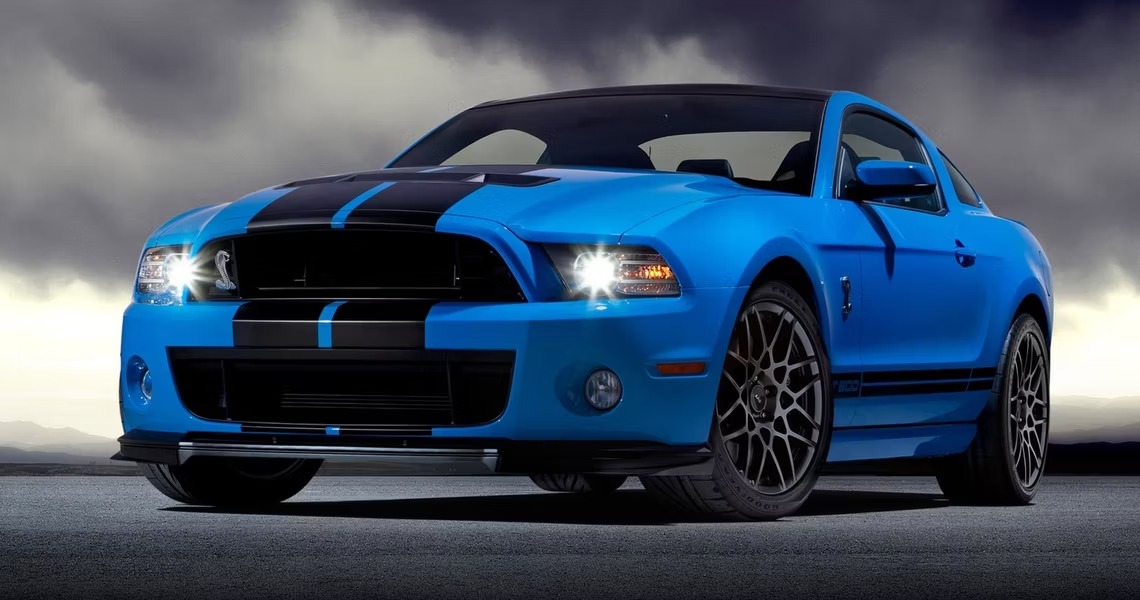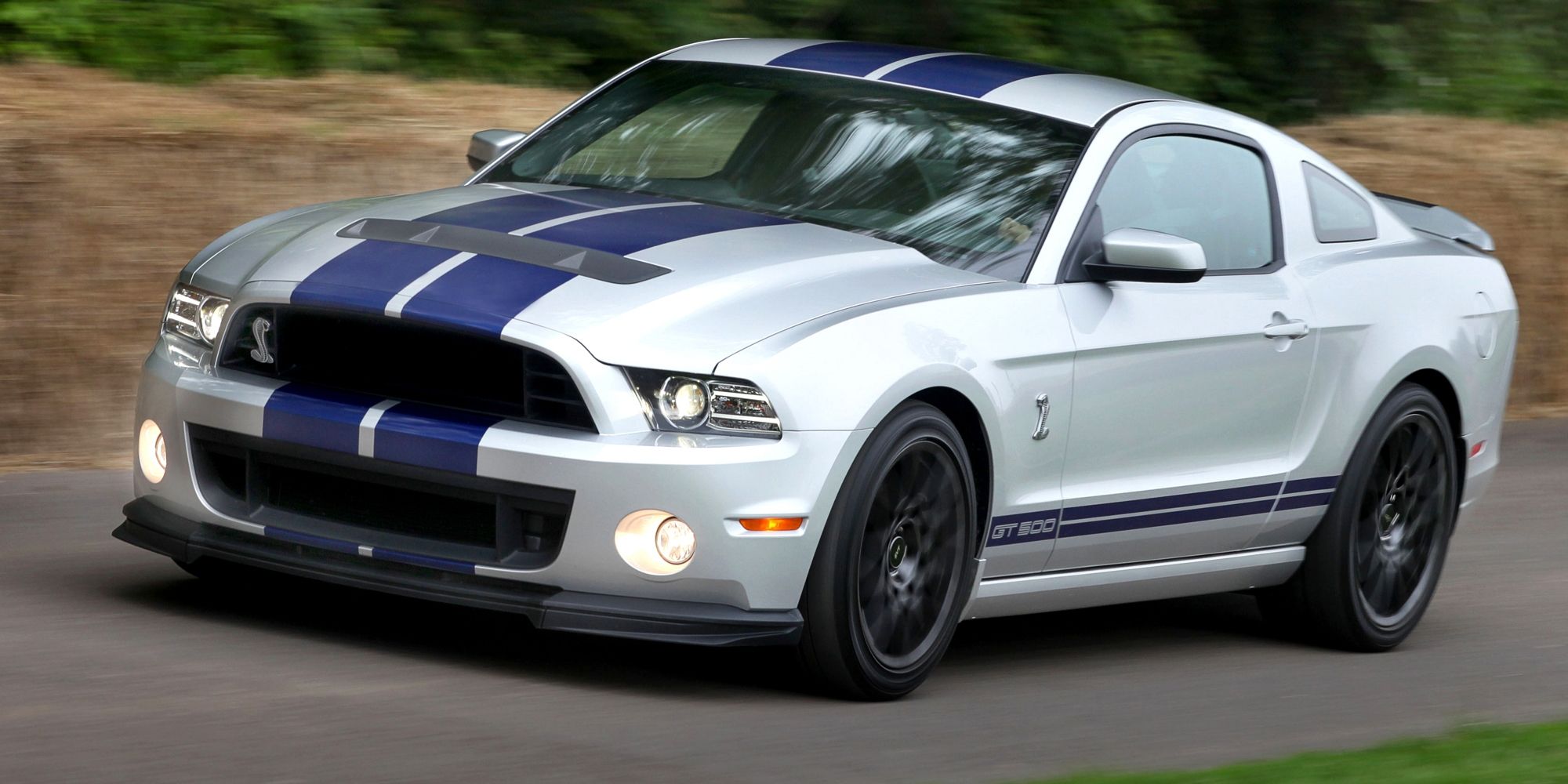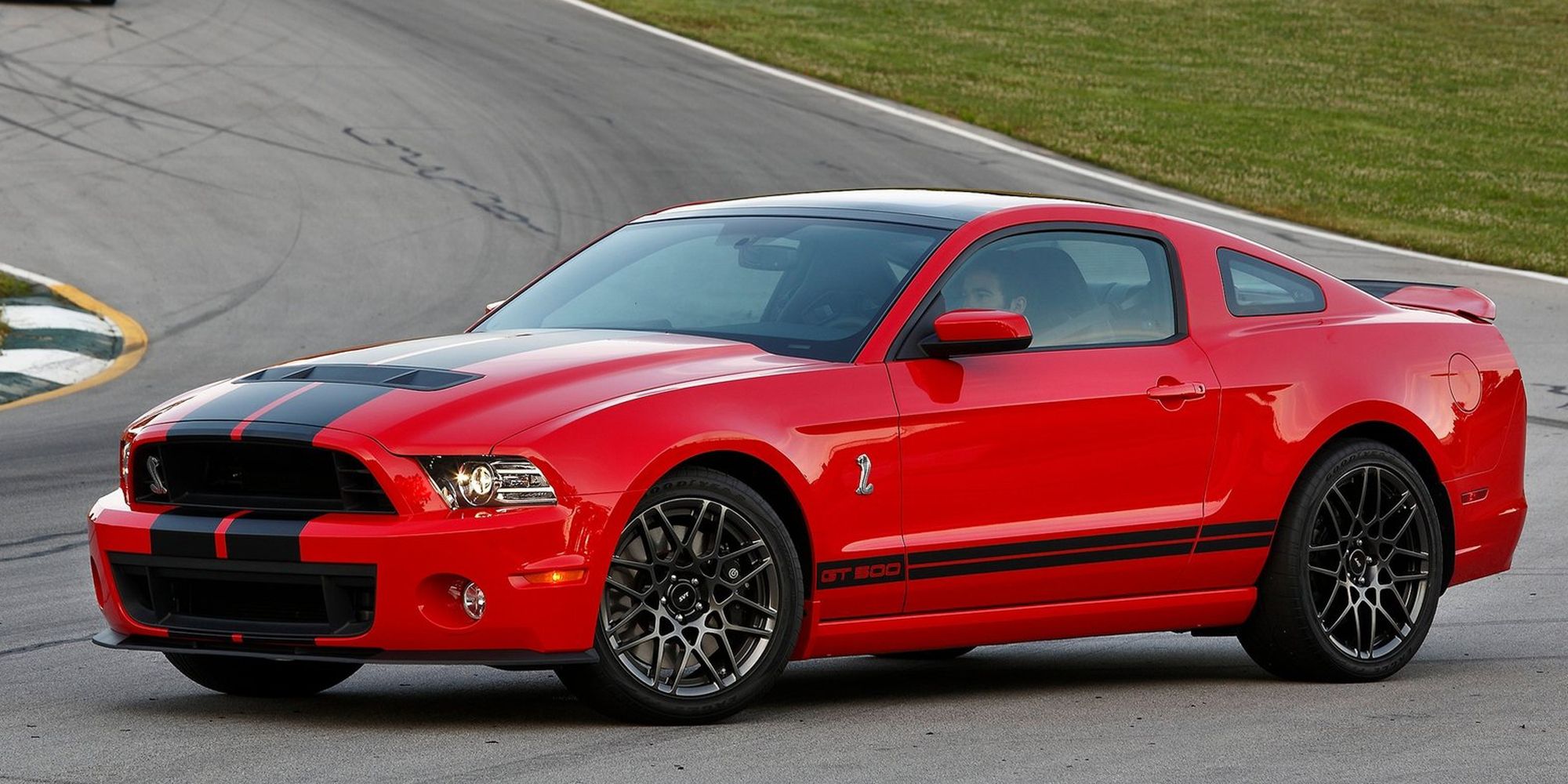The 2013 Shelby GT500 is a truly special muscle car, and the last Shelby Mustang that the legendary Carroll Shelby himself signed off on.

Ford completely revolutionized the automotive industry when they launched the Mustang almost 60 years ago, in April 1964. The Blue Oval coined the term “pony car,” and the Mustang was one of the first ever cheap speed cars, not to mention, it was among the first to offer buyers endless customization options. Perhaps the best things to happen to the Ford Mustang was the introduction of a V8 powertrain, which happened thanks in part to Carroll Shelby.
After Shelby’s endless success in racing championships, the recently revived AC/Shelby Cobra, and the Shelby Mustang models, Ford eventually started making the Shelby Mustang in-house, with Carroll himself overseeing. The last ever Shelby Mustang that Carroll himself signed off on before his death in 2012, was a really rather special one: the 2013 Shelby GT500.
2013-2014 Shelby GT500
9.50 / 10
KEY FEATURES
- Supercharged V8
- Manual transmission
- 662 hp
SPECIFICATIONS
- Model: GT500
- Engine/Motor: 5.8-liter supercharged V8
- Horsepower: 662 hp
- Torque: 631 lb-ft
- Drivetrain: Longitudinal front-engine, RWD
- Transmission: 6-speed manual
- MSRP: $54,995
PROS
- Massively powerful
- Muscular looks
- Standard manual transmission
CONS
- Interior quality isn’t the best
- Somewhat expensive to buy
- Poor fuel economy
The GT500 Is A Truly Special Shelby Mustang
The first ever Shelby Mustangs came along a few years into the Mustang’s life, towards the end of the ’60s. It started out with the Shelby GT350, and eventually, the GT500 joined the lineup. After 1968, Ford continued to make these Mustangs in-house. However, the Ford Mustang would eventually fall victim to the Oil Crisis regulations and cost-cutting, which would lead to bad Mustangs, while Carroll Shelby went on to work with the other two main American automakers. During that time, stuff like the Shelby GLH-S, the Shelby CSX, and the Shelby Dakota happened, as well as the Series 1, which borrowed its powertrain from the Oldsmobile Aurora.
Even though there were Mustang Cobras during the ’80s and ’90s, they all used SVT branding. It would take until 2007 for the Shelby name to appear on a Ford Mustang once again, with the 2007 Shelby GT500, based on the S-197 I Mustang. The S-197 generation Mustang lasted until 2014, and towards the last couple of years, Ford decided to do something truly special with the Shelby GT500.
The previous GT500 models were all pretty powerful and improved on the base Mustang, but the final run of the GT500 bumped up power massively. This is the last ever Shelby Mustang that Carroll Shelby himself saw and signed off on, and Ford intended it as a tribute to his legacy and his deeds. What a tribute it was, too.
Right off the bat, the exterior makes it clear that this is no ordinary Mustang. 2013 was the introduction of the S-197 II facelift, and the GT500 carries those styling traits, too. However, it also has a few key touches that make it very clear that it’s a special vehicle. The front end is much more aggressive, with two large intake openings and the Shelby cobra badge on the left side of the upper grille. New LED headlights were standard, as they were on most of the Mustang lineup at the time. The hood has a pronounced bulge with vents on the front half, to cool the massive supercharger under the hood. There was also a prominent chin spoiler.
Down the side, there’s another Shelby cobra badge, as well as unique alloy wheel designs. Ford offered two different wheel designs, both of them unique to the GT500 specifically. The rear end had a notable spoiler, as well as quad exhaust pipes poking out of the back. The car also swaps out any galloping horse branding for cobra badges, in the aforementioned spot, as well as on the decorative “gas cap” on the rear decklid.
Ford offered the Shelby GT500 as either a coupe or a convertible, with a variety of exterior color and stripe options. The GT500’s only main competitor at the time was the Chevrolet Camaro ZL1. There was no Hellcat at this point, and due to the Shelby’s crazy performance, it could easily trade punches with sports cars and supercars, like the McLaren 650S, the Porsche 911 Turbo S, the underrated Lamborghini Gallardo, the Nissan GT-R, and several others.
Such a special Mustang deserves a special powertrain. The Shelby GT500 forgoes the Coyote V8, and in its place comes a 5.8-liter supercharged V8 from the Trinity engine family. This powertrain allowed the Shelby GT500 to become the most powerful production Ford of all time, with an insane output of 662 hp and 631 lb-ft of torque. For comparison, that’s 242 more horsepower and 241 more lb-ft of torque than the standard Mustang GT from the same time. Stupidly powerful muscle cars are very much a thing nowadays, but back in 2013, this was crazy. The supercharger is a 2.3-liter TVS unit from Eaton, which puts out a pretty impressive 14 psi of boost. It also borrows its camshafts from the Ford GT.
According to Ford, the Shelby GT500 could do 0-60 mph in 3.5 seconds, and on to a top speed of 202 mph. These numbers are very close to the Lexus LFA, which was around six times more expensive when it was new. Numbers like this from a Ford Mustang definitely got everyone talking about the Shelby GT500. As well as the massively powerful powertrain, Ford also did a lot of work on the drivetrain. Various aerodynamic tweaks increased the car’s downforce significantly, while also decreasing drag.
Bigger tires, Brembo brakes at the front with six-piston calipers, uprated springs and a thicker front sway bar. The Performance package improved handling even more, thanks to adjustable dampers and a limited-slip differential. The Tremec six-speed manual transmission, which was the sole transmission option, received some buffing to handle the engine’s increased output. The Shelby GT500 also used a one-piece carbon fiber driveshaft. However, the Shelby GT500 was still a pretty heavy car, weighing at around 3,900 lbs.
The GT500 Sports A Normal Mustang Interior
On the inside, the Shelby GT500 didn’t really have that many differences compared to the regular Mustang. One notable one was the cobra badge on the steering wheel, replacing the Mustang logo. The GT500 also received a unique gauge cluster, with the SVT logo on the tachometer face. This was one of the last cars to bear an SVT badge of any kind, before that arm of Ford dissolved. Other than that, the interior was pretty typical Mustang fare.
Retro styling is one of the strong points of the interior, but the quality of the materials and the overall setup isn’t something to brag about. Everyone knows that this era of Mustang didn’t exactly have the highest quality interior, and even though it’s suitably unique, material quality and fit and finish isn’t the best. Despite that, the equipment is pretty decent. MyFordTouch was available on the GT500, as well as Recaro sport seats, dual-zone climate control, and cruise control. You could also dial in the RPMs at which the launch control system would activate. The GT500 is a pretty reliable car, with owners reporting that the engine can take a beating. Aftermarket support is also excellent. It seats four people total, and the cargo area offers up 13.4 cubic feet of space, which is a pretty solid number.
The Mustang GT500 Values Are Going Up
Due to how special the 2013 Shelby GT500 is and how short the production run was, it shouldn’t come as a surprise that values are going up. Classic.com estimates that the average value of this era of Shelby GT500 goes for around $53,500. That also includes the pre-2013 GT500 models, which are arguably not as special. Expect to pay closer to $60,000, or in some cases, up to $70,000 for a pristine 2013 or 2014 GT500 with low miles. Most of the ones for sale are in mint condition, so you don’t have to worry about that.
That seems like a lot of money to pay for a Ford Mustang, but this is definitely no ordinary Ford Mustang. It’s a tribute to the legendary Carroll Shelby, and the final Mustang that he signed off on. It’s undoubtedly a future classic, and a collectible item.











